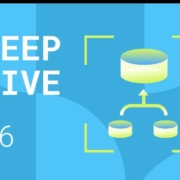L’Architecture Data Mesh représente un changement de paradigme dans l’ingénierie des données, offrant une nouvelle approche pour tirer le meilleur parti des données.
## Data Mesh : Une architecture de données répartie et orientée domaine qui fait évoluer le paradigme de l’ingénierie des données
Data Mesh is based on the idea of a “data mesh”, which is an interconnected network of data services that are designed to be loosely coupled and highly distributed. Data Mesh focuses on the domain-oriented design of data services, which allows for greater agility and flexibility in data engineering. Additionally, Data Mesh emphasizes the use of open source software and cloud-native technologies, which can help organizations reduce costs and increase scalability.
Le Data engineering est un domaine en constante évolution qui est constamment mis à l’épreuve par le volume croissant, la vitesse et la variété des données générées et traitées par les organisations. Les approches traditionnelles de data engineering sont souvent centralisées et monolithiques, ce qui peut entraîner des difficultés en matière d’évolutivité, d’agilité et de flexibilité. Ces dernières années, un nouveau paradigme architectural appelé Data Mesh a émergé comme une nouvelle façon de relever ces défis et de permettre une data engineering plus efficace et plus efficace.
Data Mesh est une architecture de données distribuée et orientée vers le domaine qui prône un changement de paradigme dans la façon dont le data engineering est abordé au sein des organisations. Il a été introduit pour la première fois par Zhamak Dehghani, un leader de pensée dans la communauté du data engineering, et a suscité un intérêt considérable en tant qu’approche prometteuse pour le data engineering moderne.
Data Mesh repose sur l’idée d’un «maillage de données», qui est un réseau interconnecté de services de données conçus pour être faiblement couplés et hautement distribués. Data Mesh se concentre sur la conception orientée vers le domaine des services de données, ce qui permet une plus grande agilité et flexibilité dans le data engineering. En outre, Data Mesh met l’accent sur l’utilisation de logiciels open source et de technologies natives du cloud, ce qui peut aider les organisations à réduire leurs coûts et à augmenter leur évolutivité.



 Over the last fortnight one site builder has gone toe-to-toe with another, as Wix launched a marketing campaign aimed at attracting WordPress users, and instead attracted universal ire.
Over the last fortnight one site builder has gone toe-to-toe with another, as Wix launched a marketing campaign aimed at attracting WordPress users, and instead attracted universal ire.

